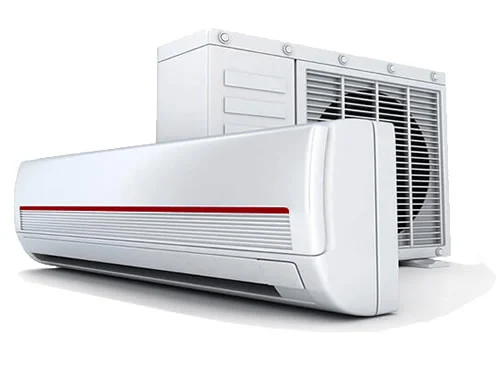
Mini-Split AC Systems Installation & Repair Houston
Ductless Mini-Split Air Conditioning Systems Installation & Repair Services
Is your household in an extended relay race to the thermostat to change the temperature settings because what’s comfortable for one member of the family isn’t right for you?
Answer these Questions:
- Is there a part of your home, like the garage, that you’d love to use more often if only it were hooked up to AC?
- Do you ever think about how you’re spending real money to cool your entire house when you’re really only going to be in the home office most of the time anyway?
There are Many Reasons we’ve seen Houston homeowners install mini-split AC systems.
There’s the hobbyist who wants to make sure their kitchen, sewing or gardening or music room has a well-regulated temperature.
There’s the sports fan or handy man who wants to create the ultimate “man cave” out of their garage or utility room. There’s the gamer who has an entire LAN network and servers and monitors set up for high-speed gaming, and wants to keep cool in the heat of battle, along with their intensive tech set-up, too.
Pretty much any person who wants the ability to accurately control the temperature of a special room, or a room that isn’t connected to central AC, can benefit from a mini-split AC system.
What Is a Mini-Split AC?
Mini-split air conditioners, also known as ductless mini-splits, are versatile and energy-efficient home heating and cooling alternatives to central air conditioners.
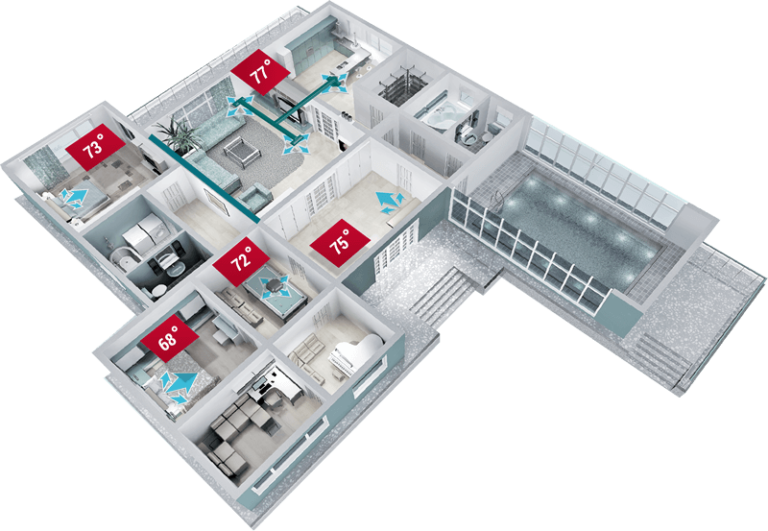
Central air conditioners also don’t exactly cool your whole house, leaving unducted garages, basements, and enclosed porches unconditioned and thus effectively unusable during Houston’s long stretches of heat and humidity. And, central ACs use a lot of energy, which you will notice in the form of higher utility bills and lighter pockets.
Friends, we’re here to tell you that we don’t have to live this way.
End the thermostat wars, lower your bills, turn your specialty room for gaming or yoga into a well-cooled oasis, and reclaim the areas of your home that you’ve been ceding to Houston’s heat and humidity with a mini-split AC!
Mini-split ACs give you room-by-room temperature control and can easily be expanded to include even the parts of your home that lie beyond central air conditioning’s reach.
Whether as your only system for home heating and cooling or as a supplement to your central air conditioning, a mini-split unlocks a life in which you can actually tinker in the garage in the middle of summer, or keep your home office nice and cool without also having to cool the parts of your house that your family doesn’t use as often.
Does one of your children like to keep the bedroom cold at night while the rest of the family wants it toasty? A mini-split means you never ever have to argue about it again.
In addition to bedrooms, home offices, and finished garages and attics, mini-split AC systems are great for additions and remodels because they only need a three-inch hole in the wall for conduit. The alternative is spending a lot of money to add ductwork or settling for a window unit, which can make it easier for intruders to break into your home. Mini-split AC’s minimal installation requirements also make them great options for older homes without ductwork, or homes where installing ductwork would ruin important aspects of the home.
The Benefits of Having a Mini-Split Air Conditioner
The Benefits of Having a Mini-Split Air Conditioner
Benefit #1
Individual Temperature Control
Benefit #2
No Ductwork Required
Benefit #3
Versatile and Scalable
Benefit #4
Whisper Quiet
Benefit #5
Lower Utility Bills
Mini-split air conditioners are energy-efficient home cooling systems that can achieve Seasonal Energy Efficiency Ratio (SEER) of around 26 compared to central air, which averages a SEER of around 13. Mini-split ACs also have variable speed compressors that don’t need much energy to operate when compared to central AC.
Mini-splits lose less of the cold air that they produce than central AC because they produce cool air in each room rather than having to use energy to pump it through a duct system. According to the US Department of Energy, a typical house loses 20% to 30% of conditioned air through air ducts. The built-in advantages of mini-duct ACs multiply when energy-conscious homeowners turn indoor units off in rooms that aren’t being used.
To get the most out of your mini-split AC’s energy savings potential, look for a high Energy Star rating when you choose your unit.
How a Mini-Split AC Works
Mini-split air conditioners consist of an outdoor condenser unit connected to one or several indoor evaporator units by an electrical line and pipes that carry refrigerant liquid, which cools the home by absorbing heat and carrying it outside as it cycles between the indoor and outdoor units.
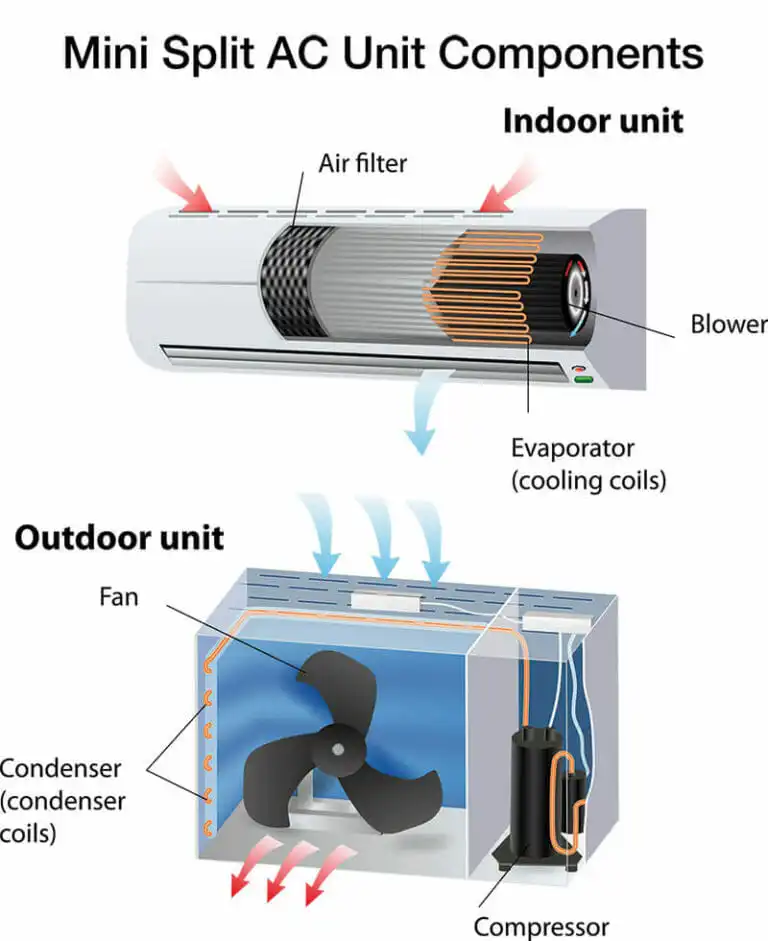
Mini-split air conditioners consist of an outdoor condenser unit connected to one or several indoor evaporator units by an electrical line and pipes that carry refrigerant liquid, which cools the home by absorbing heat and carrying it outside as it cycles between the indoor and outdoor units.
The mini-split AC’s condenser unit is installed outside. While a mini-split AC condenser unit performs similar functions to the large outdoor units found on central AC systems, a mini-split outdoor unit is much smaller and sits directly on the side of the home. The size difference in outdoor units makes mini-split air conditioners more manageable, though it does sometimes make installation for interior rooms more challenging when there’s not a clear pre-existing route for the refrigerant and electrical lines to connect to the indoor unit. The mini-split AC outdoor unit houses a compressor to pump refrigerant to the indoor evaporator unit and back out to the condenser coils in the outdoor unit, where a fan blows away heat collected from inside your home.
Inside the home, an evaporator unit is installed on a wall in each room serviced by the mini-split unit, allowing each room to independently produce cool air the same location as it is needed. The indoor unit holds an air filter and a blower to move air over the evaporator, and a heat exchanger that removes heat and humidity with refrigerant as warm air blows past it. A drain line (condensate drain hose) is also installed to drain the water that the unit dehumidifies out of the air.
Because each indoor unit contains its own evaporator coil, mini-splits generate cool air in each room separately, making them more energy efficient. In contrast, the evaporator coil of a central air conditioning system is located in a central location (hence the name) near the air handler and relies on a network of ducts to blow the cool air it produces into each room. Cool air therefore needs to move farther to get where it is needed with central air systems, resulting in some energy loss in the ductwork, and can only reach areas of the home that are connected to the duct network.
Mini-Splits Versus Central Air Conditioning Systems
The Pros and Cons of the Mini-split and Traditional Air Conditioning Systems.
| Traditional ACS | Mini-Split ACs |
|---|---|
😊 Operation
|
😊 Operation
|
😕 Ductwork
|
😊 Ductwork
|
|
😕 Temp Control
|
😊 Temp Control
|
😕 Noise Level
|
😊 Noise Level
|
😊 Filtration
|
😕 Filtration
|
😊 More discrete aesthetically
|
😕 Less discrete aesthetically
|
😊 Lower installation costs
|
😕 Higher installation costs
|
😕 Less efficient / higher energy bills
|
😊 More efficient / lower energy bills
|
| 😕 Less versatile: One setting controls the air temperature throughout the entire home unless you install two split central AC systems | 😊 More versatile: Can be used alone, as a supplement to existing forced-air systems, or for specific rooms only |
Why Choose John Moore for Your Mini-Split AC Installation
Purchasing the ideal mini-split air conditioner for your needs is best accomplished with the help of a highly trained professional, and that process starts by calling John Moore for a free consultation.
Mini-split air conditioners are low-maintenance to own and rarely require repairs—unless the mini-split was improperly installed. Improper installation is actually the leading reason mini-split air conditioners need repairs. And, between the complex sizing, use, and placement calculations that take place at installation and the advanced technology each unit contains, installing a mini-split air conditioner improperly is really easy to do if you’re not training in mini-split AC installation.
It takes a seasoned and trained professional with an eye for the bigger picture of how a mini-split will interact with the specific conditions in the room to choose the properly sized mini-split AC for your space and to install the system and its electronic components correctly, loaded with the appropriate amount and pressure of refrigerant. Because there is so much to consider when installing mini-split ACs, John Moore’s mini-split professionals receive ongoing specialized training with top mini-split manufacturers, so you can rest easy knowing your mini-split AC is properly installed.
For the past decade, John Moore has cultivated a close working collaboration with the biggest names in mini-split AC manufacturing and design, including Mitsubishi and Daikin. Our partnership with these titans of the mini-split air conditioning world means that John Moore service professionals are some of the leading experts for mini-split installs in the Houston area. As a certified provider of mini-split AC services, we also have a direct line to industry experts for consultation on-demand and access to hard-to-get parts. We can even get their reps to come out and consult on complex installation jobs as needed.
In short, purchasing the ideal mini-split air conditioner for your needs is best accomplished with the help of a highly trained professional, and that process starts by calling John Moore for a free consultation.
John Moore’s Free Mini-Split AC Consultation
Purchasing the ideal mini-split air conditioner for your needs is best accomplished with the help of a highly trained professional, and that process starts by calling John Moore for a free consultation.
Choosing the Size and Location for Your Mini-Split AC
To operate efficiently without needing much in the way of repairs, mini-split air conditioners need to be the right size for your specific room and placed in the optimal location. When these calculations are off, mini-splits can short-cycle, which wastes energy and reduces temperature and humidity accuracy. If you go with a system that’s too big, it will cool the space faster than the unit can dehumidify it, leaving you with a humid room and a potential mold problem.
Sizing and location considerations vary based on how you plan to use your mini-split. For example, calculations for adding a mini-split to cool a gaming room that needs to handle the extra heat generated by computer towers will be different from what you need to add a mini-split to keep a master bedroom cool at night.
During your consultation, a John Moore mini-split specialist will take a look at the room you want to install a mini-split AC inside of and talk to you about how you plan to use the room and your options for the indoor unit location.
Evaluating the Need for Additional Work
Depending on the unique needs of your space, we may also discuss any other renovations you may want or need to bring your vision to life. Additional work may include the installation work needed to place a mini-split in the room given its intended purpose, like sealing the room or adding insulation, or running out an electrical line if the space doesn’t have one that’s accessible to power the unit.
The John Moore advantage in this part of the process lies in our ability to coordinate with our own renovations and electrical departments to get the job done with all the work factored into one single estimate.
Your Free Estimate
Scheduling Your Installation
John Moore’s Mini-Split AC Installation Process
In most cases, John Moore can have your mini-split AC installed as soon as the day after your free consultation.
More complex jobs that require renovations or electrical work may take a bit longer for installation. For example, some homeowners prefer to build out a slab for the outdoor unit to sit on, and we’d need to wait for the slab to dry before completing the mini-split AC installation. Homeowners wishing to install a mini-split air conditioner in an interior room may experience longer installation times, too, depending on how challenging it is to run the refrigerant and electrical lines from the outdoor unit that sits on the exterior of the home all the way into the interior room. Houston being Houston, sometimes bad weather may cause a slight delay as well.
- The first thing we do when we show up to install is put down a drop cloth and make sure every technician has their shoes covered so we don’t track mud or dirt into your home. We may request to move furniture or valuable items so we don’t accidently bump into, scratch, or break anything. And if you have pets, we may ask for you to keep them in a room or at the neighbors to minimize the chances of any accidents (we‘d hate to scare your pets with loud noises, and we don’t want them to get hurt by our equipment). We measure a second time just to make sure everything will fit through doorways and tight spaces. Then if there is an old system to clear out, we load all of your old equipment into a truck to take back and recycle
- After that, we get to work installing your new mini-split AC system. There will be a lot of moving of large equipment and some loud noises as we fabricate parts and drill units into place. Then we connect the refrigerant lines and attach your new system to your home’s power source. And then, we turn it on and make sure the system is operating correctly. If we need to make adjustments, we will until it is perfect. After that, we take you on a tour of your new system, provide you with maintenance tips, and let you know to call us if you need any adjustments or encounter any issues.
Best Practices for Maintaining Your Mini-Split AC
Properly installed mini-splits are fairly low maintenance, provided you keep the drain line, filter, and area around the unit clear and have a professional out for regular tune-ups.
Now, low maintenance doesn’t mean you can forget all about your mini-split until you notice a problem. As is the case with all major appliances, regular maintenance is key to extending the life of your mini-split AC and making sure it’s operating as efficiently as possible—and in the case of mini-splits, the key word here is regular. You do need to be consistent with your mini-split upkeep and build it into your regular home cleaning routine. On the plus side, you can do most of it yourself without ever having to break out a toolbox!
One of the most important objectives of mini-split maintenance is to protect the airflow around the units and check for mold. You can do most of this maintenance yourself, including:
Weekly:
- Wipe the exterior of the indoor unit with a damp cloth
- Make sure there’s at least 4 feet of clearance around the outdoor unit and that it’s free of dust and debris
Monthly:
- Clean each interior unit’s filter, replace filters that are damaged or old, and check for mold while you’re there
- Clean the exterior of the outdoor unit with a damp cloth
- Turn the power off to the outdoor unit and hose it down to clear dirt and debris from the unit.
Next you’re going to want to have a seasoned professional with the benefit of ample practice and a trained eye for spotting potential problem areas out once or twice a year to get into each unit to clean the coils and check for mold. These maintenance tasks can coincide with your annual tune-up to make sure the system itself, including potentially hazardous refrigerant liquid and electrical components, is in working order.
Once or twice a year:
- Clean the evaporator coils in the indoor unit
- Clean the condenser coils in the outdoor unit
- Check both units for mold, mildew, ice, and condensation buildup
Annually:
- Book your annual inspection and tune up
| WEEKLY | MONTHLY | BIANNUALLY | ANNUALLY | |
|---|---|---|---|---|
| INDOOR UNIT | Wipe exterior down with damp cloth | Clean each interior unit’s filter, replace filters that are damaged or old, and check for mold while you’re there | Clean evaporator coils & check for mold, mildew, ice, or condensation buildup (call a professional if you find any) | Call a professional to schedule your yearly inspection and tune up |
| OUTDOOR UNIT | Ensure at least 4 feet of clearance and clear dust/debris from exterior | Power off the unit and clean the exterior of the outdoor unit with a damp cloth or garden hose | Clean condenser coils & check for mold, mildew, ice, or condensation buildup | Call a professional to schedule your yearly inspection and tune up |
| CAN I DO MYSELF? | Yes | Yes | No, because these tasks deal with internal components and call for a keen eye for spotting mold or problem areas developing | No, because these tasks deal with hazardous materials like refrigerant liquid and complex electrical components |
How To Know if Your Mini-Split AC Needs Service
Properly installed mini-splits are fairly low maintenance, provided you keep the drain line, filter, and area around the unit clear and have a professional out for regular tune-ups.
Though mini-split air conditioners tend to be low maintenance, sometimes they do need some extra attention. In the rare event that a mini-split does need service, the technology in the system makes it easy for a trained professional who knows how to read the error codes to identify the problem and fix it. And in most cases, repairs tend to be on the order of a clogged drain line or blower motor that’s gone out—nothing major, in other words.
Repairing mini-splits is a job for professionals, but anyone can detect the signs of a mini-split AC that needs repairs. Your mini-split might need repairs if it makes persistent crackling or gurgling sounds, stops blowing cool air (aside from when you tell it to), stops dehumidifying, starts making a funny smell, or starts dripping water.
How to Spot Common Mini-Split AC Issues
| IF... | LIKELY CAUSE |
|---|---|
| Mini-split AC won’t start | Batteries in the remote need to be changed |
| Persistent crackling, gurgling, or swooshing sound |
Occurs when it switches into defrost mode, which itself is normal, but if keeps switching to defrost, one of the following may be amiss:
|
| Not heating or blowing hot air | Iced-over coils, which may be caused by insufficient refrigerant, flawed circuit board, or malfunctioning censors |
| Not cooling or blowing cool air | Refrigerant leak |
| Not dehumidifying | Mold in the condensate drain line, or it is oversized (the system is too big for the room, so it cools the room faster than it can dehumidify) |
| Smells: musty, mildew, sour | Mold (check condensate drain line) |
| Smells like vinegar or gives off a sweet odor | Refrigerant leak |
| Common Mini Split-AC System Problems and Their Causes | ||||||
|---|---|---|---|---|---|---|
| AC won’t start | Consistent crackling or gurgling sound | Dripping water or failure to drain | Not heating or blowing hot air | Not cooling or blowing cool air | Strange smells | |
| New batteries needed in remote | ⮿ | |||||
| Leaking or insufficient refrigerant | ⮿ | ⮿ | ⮿ | |||
| Dirty or clogged condensate drain line | ⮿ | ⮿ | ||||
| Sensor malfunction | ⮿ | ⮿ | ||||
| Flawed circuit board | ⮿ | |||||
| Electrical issue | ⮿ | ⮿ | ||||
Mini-Split AC Repair Services
If Your Mini-Split Needs Repairs, John Moore Can Handle Them All.
Mini-Split AC Error Codes
How We Fix Clogged Mini-Split Drain Lines
Preventing Clogged Drain Lines
- Remember to book your annual tune-up! During your mini-split AC tune-up, we’ll flush the condensate drain to prevent clogs by cleaning out all the pet hair, dust, bugs, and other debris that finds its way inside.
- Keep the area around your indoor unit clean and vacuumed to prevent dirt and debris from eventually clogging the drain line.
Broken Blowers

Best of the Best
John Moore Mini-Split AC Warranty
In addition to the parts warranties provided by the manufacturer of each mini-split AC we install, John Moore offers the longest labor warranties for repairs in Houston.
Lennox Premier Dealer
Attic Insulation Special
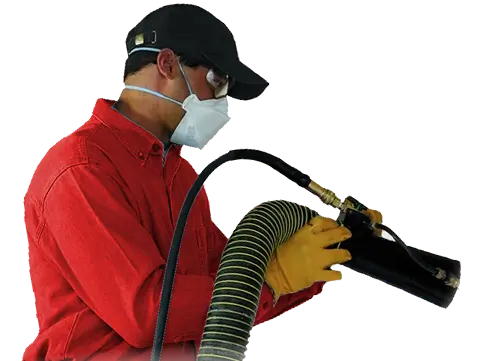
$100 OFF
For a Limited Time• Increase energy efficiency
• Improve your comfort
Indoor Air Quality & Duct Cleaning
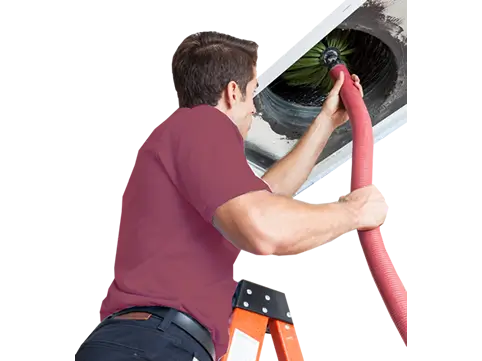
$100 OFF
For a Limited Time• Eliminate pet & household odors
• Breathe and sleep better
$50 OFF Nisus DSV Treatment
Specifically formulated to prevent contamination, and to eliminate existing viruses and bacteria, including the Coronavirus.
John Moore
(877) 730-2525
**This will not keep them out. Regular cleaning and disinfecting by home owner is required. Applies to initial treatment. Limit one per household. Some restrictions may apply. Cannot combine offers. Expires 12/31/2020.
Click here to see all coupons.
SEND TO PHONE$100 Off Platinum Carbon Air Purifier
Cleans the air by combining UVC light and activated carbon – two technologies proven to kill germs and clean the air.
John Moore
(877) 730-2525
*This purifier is installed directly into the central air system, so the air is purified and circulated throughout the whole home. Limit one per household. Some restrictions may apply. Cannot combine offers. Expires 12/31/2024.
Click here to see all coupons.
SEND TO PHONEAC Services
Save $20 on your next AC service or repair with any work over $100.
John Moore
(877) 730-2525
*Limit one per household. Some restrictions may apply. Cannot combine offers. Expires 12/31/2024.
Click here to see all coupons.
SEND TO PHONEAttic Insulation
Save $100 on attic insulation with minumum R-19 and 2,000 sq. ft.
John Moore
(877) 730-2525
*Limit one per household. Some restrictions may apply. Cannot combine offers. Expires 12/31/2024.
Click here to see all coupons.
SEND TO PHONEUV Light Disinfection
FREE UV light with purchase of complete new 16-SEER AC system.
$549.99 Value
John Moore
(877) 730-2525
*Limit one per household. Some restrictions may apply. Cannot combine offers. Must be presented at time of purchase. Expires 12/31/2024.
Click here to see all coupons.
SEND TO PHONEShare this Page
